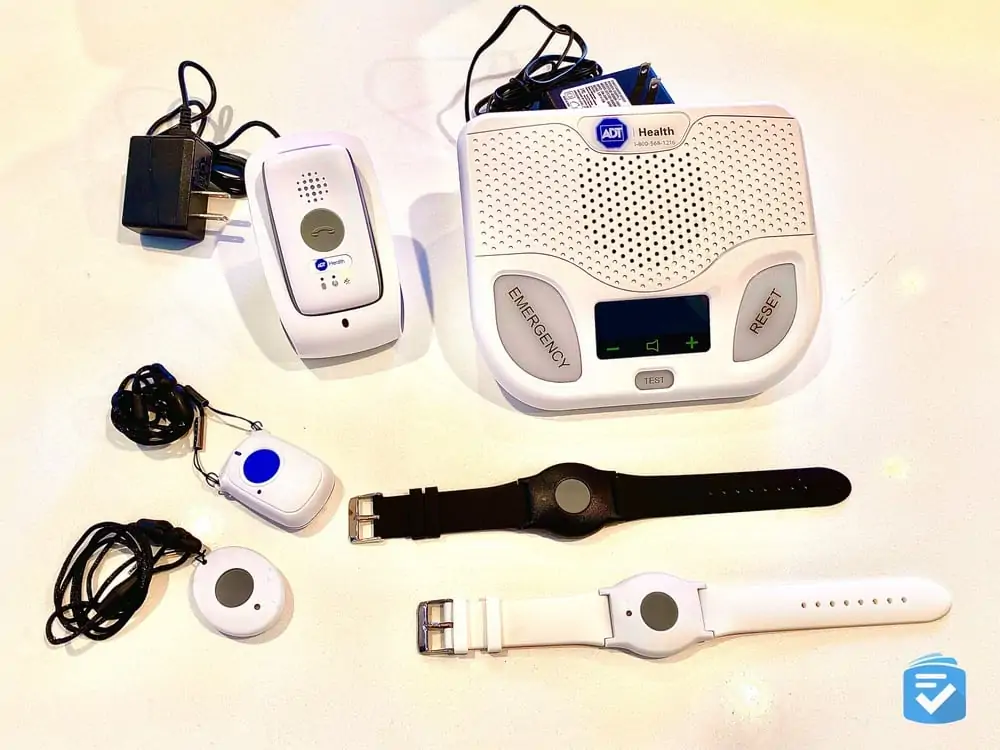
In our days, you have probably heard of the medical alert systems’ importance way too often. Everyone is telling you that you need it and dumping a lot of scientific information all at once. Considering the technological nature of the devices and the variety of the brands, it is natural to think that these systems are complicated to use and are not suitable for seniors, therefore not implementing them at all. However, this article’s goal is to break down medical alerts’ core step by step for you to get a better understanding on functionality of devices, and maybe even dispel any doubts.
What Are Medical Alert Systems?
Medical alert systems, also known as personal emergency response systems (PERS), are devices that allow users to call for assistance during emergencies such as falls, medical episodes, or other situations where immediate help is needed. The systems are often used by elderly individuals or those with chronic health conditions who live alone or are at risk of injury or an emergency health concern.
Most medical systems consist of a base station and a wearable device, but it may vary from one brand to another. The pendants or wristbands usually have an emergency button, which can connect individuals to dispatch emergency services and trusted contacts.
How Do Medical Alert Systems Function?
Classical medical device setup looks like this:
- The Wearable Device: This is a small device that has an emergency button. It is ideally waterproof, because baths and showers are statistically quite traumatic.
- Base Station Connectivity: This is installed inside the user’s home and is connected via a landline or cellular network. These systems cover home and closest outside range.
- Monitoring Center Response: The monitoring center is staffed with trained professionals available 24/7. Once they receive a signal from the base station, they attempt to communicate with the user via the system’s built-in speaker and microphone. The operator asks questions to assess the severity of the situation. In cases where the user can’t respond, the operator will immediately dispatch emergency services.
- Emergency Dispatch: If emergency assistance is required, the monitoring center will contact local emergency responders or a designated list of family members and caregivers.
- GPS and Fall Detection: Modern medical alert systems come with advanced features such as GPS tracking and fall detection. If users press the emergency button, the system pinpoints their location and directs emergency services accordingly. Fall detection technology uses sensors to detect sudden movements or impact, automatically sending an alert even if the user is unconscious or unable to press the button.
The Importance of Medical Alert Systems for Seniors
According to the Centers for Disease Control and Prevention (CDC), one in four older adults fall each year, with falls being the leading cause of both fatal and non-fatal injuries among older adults in the U.S. In 2020 alone, over 36 million falls were reported, with more than 32,000 deaths attributed to fall-related injuries.
Here’s where a medical alert system comes to play. In emergency situations, where every second counts, a rapid response drastically eliminates the risk of possible complications. Quick reaction saves lives! In many cases, the sooner help arrives, the better the chances of a full recovery.
Features that Enhance Safety
- Automatic Fall Detection: Many systems now come equipped with fall detection technology that automatically triggers an alert if the wearer experiences a fall.
- GPS Tracking: For active seniors who still enjoy going out, GPS-enabled medical alert systems provide protection beyond the home.
- Two-Way Communication: The base stations are designed with a built-in speaker and microphone, allowing users to communicate directly with the monitoring center.
- Waterproof Devices: Since many falls occur in the bathroom, most medical alert devices are waterproof, allowing users to wear them while showering or bathing without worry.
- Battery Backup: Many systems come with battery backup capabilities, ensuring they remain functional even during power outages, which is critical during emergencies.
Statistical Impact on Safety
According to a study published in the Journal of the American Geriatrics Society, seniors who use medical alert systems are able to receive help more quickly, resulting in a 26% reduction in hospital admissions and a 50% reduction in long-term care admissions.
Moreover, a report from AARP found that seniors who live independently but use medical alert systems feel more confident about living on their own.
Choosing the Right Medical Alert System
Now that you know 101 of medical alert systems, and surely are convinced to give it a try, it is the perfect time to choose the device for you. The best way would be to write down your requests and nuances of your lifestyle and compare systems that would meet your standards. In order to not waste your money trying, there are reviews on Med-Alerts that show the low downs of every brand out there.
Conclusion
Medical alert systems are truly life-savers and a lot of professional sources have conducted many researches on that topic. The increasing number of seniors trusting their safety into the arms of responsible medical alert brands shows that incorporating technology into their everyday lives means opting for safe and independent aging. Embrace your sear and yellow leaves and provide peace of mind for your loved ones.






